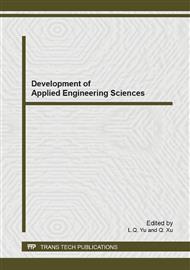p.139
p.143
p.147
p.152
p.156
p.161
p.165
p.169
p.174
A Kind of Resistance Capacitance Measurement Method Based on Time Constant
Abstract:
This paper proposes a capacitance resistance measurement method based on time constant. Using the charging and discharging characteristics of the resistance and capacitance measures the value of the resistance and capacitance through a semi potential rise and fall time measurement. Theoretical analysis of the relationship between the value of the resistance and capacitance and the measuring time, designing the fast second charging and discharging method meeting the initial condition of charge and discharge, improving the measurement speed, expanding the measurement range of the resistance and capacitance. Realizing the effective measurement of the resistance and capacitance by the FPGA control logic and timing method.
Info:
Periodical:
Pages:
156-160
Citation:
Online since:
October 2014
Authors:
Keywords:
Price:
Сopyright:
© 2014 Trans Tech Publications Ltd. All Rights Reserved
Share:
Citation:


